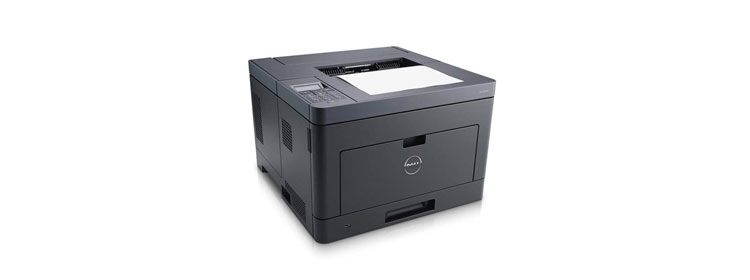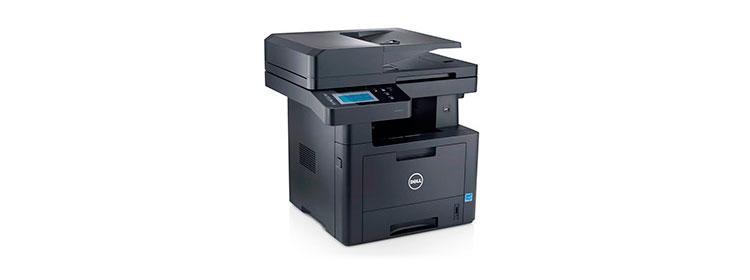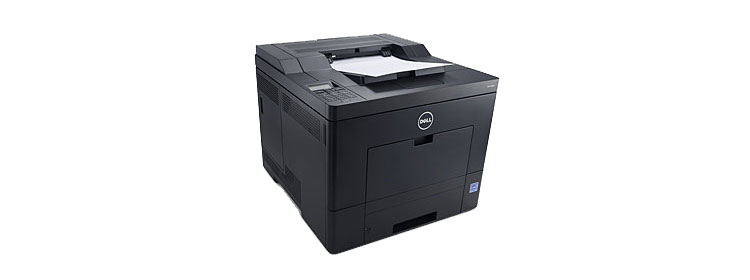The Dell Smart Printer – S2810dn ($229.99) delivers the right mix of features for a workhorse monochrome laser printer—namely, fast speed, good paper handling, and reasonably high-quality output. Its 350-sheet paper capacity puts a limit on how much it can print conveniently, but it’s suitable, and a good choice, for up to heavy-duty use as a personal printer or moderate use in a micro to small office or workgroup.
Features
In many ways, the S2810dn$149.99 at Dell is a close match for the Brother HL-5450DN$144.99 at Amazon, which is our Editors’ Choice for this category of monochrome laser printer. Both offer Ethernet and USB as connection choices, with the Dell printer adding Wi-Fi as an optional ($59.99) extra, and Brother offering the slightly more expensive Brother HL-5470DW$179.99 at Amazon as a nearly identical alternative to the Brother HL-5450DN, but with Wi-Fi added.
All three printers also offer similar paper handling, with a 250-sheet main tray, a duplexer for two-sided printing, and a multipurpose tray. The S2810dn actually has a small edge for its standard paper capacity, with a 100-sheet, rather than 50-sheet, multipurpose tray. However, Brother offers an optional additional tray for both of its models, boosting the maximum capacity for each to 800 sheets. The option to add another tray helps make the Brother models appropriate for heavier-duty printing than the S2810dn can easily manage. That, along with a low price, keeps the Brother HL-5450DN in place as our top pick.
Like the Brother models, the S2810dn offers mobile printing support. If you connect it to a network, you can print from iOS, Android, and Windows phones and tablets, by connecting through an access point on your network. Dell also offers the ability to print from select websites (including Dropbox, Evernote, and Box, for example) using a supplied program that runs on your PC or an equivalent downloadable app on your mobile device. In either case, you give commands from the program and relay the data through your PC, phone, or tablet.
The advantage of this approach—as opposed to connecting to websites directly with the printer and giving commands from the front panel—is that you can print from a website even if the printer is connected to your PC via USB cable. Because the PC-based app works only with Windows 7 and above, however, I couldn’t try it out with the Windows Vista system I used for testing.
The printer offers some security features for offices that need it—including private printing, which lets you send a job to the S2810dn, but not print it until you enter a PIN code at the front panel.
Setup, Speed, and Output Quality
The S2810dn measures 10.8 by 16.1 by 17.2 (HWD), which makes it a little bigger than you might like to have sitting on your desk, but small enough to fit reasonably well if you need to keep it there. At 27.1 pounds, most people will be able to move it into place without help. For my tests, I connected it to a network, using the Ethernet port. Setup is standard fare.
Dell rates the S2810dn at 35 pages per minute (ppm), which is the speed you should see when printing text or other documents that need little to no processing. On our business applications suite (timed with QualityLogic’s hardware and software), the printer managed a suitably fast 11.8ppm with its default setting for duplex (two-sided) printing, and an even faster 13.4ppm when I set it for simplex (one-sided) printing. That makes it convincingly faster than the Brother HL-5450DN, at 10.8ppm in simplex mode, or the Brother HL-5470DW, at an essentially identical 10.7ppm.
The S2810dn also delivers more-than-acceptable output quality across the board. Text is at the high end of the range that includes most monochrome lasers, making it good enough for virtually any use short of serious desktop publishing.
Graphics are at the high end of average, making the output easily suitable even for PowerPoint handouts and the like, as long as you consider monochrome output suitable at all. As with most monochrome lasers, photo output is good enough for printing photos on webpages with recognizable images, but not for anything more demanding than that.
Conclusion
If there’s any possibility that your print needs may increase to the point of needing a higher paper capacity, either the Brother HL-5450DN or the Brother HL-5470DW is likely a better choice than the S2810dn. Even if you won’t need a higher capacity, you might still prefer the Brother HL-5450DN over the S2810dn because of its lower price. Likewise, you might prefer the Brother HL-5470DW over the S2810dn for its lower price, plus its built-in Wi-Fi.
If you’re sure you won’t need the higher capacity the Brother printers offer, however, the Dell Smart Printer – S2810dn is a strong candidate. Its fast speed justifies its higher price compared with the Brother printers, it delivers essentially the same level of output quality, and it even offers a slightly higher standard paper capacity than either Brother model. The combination makes the S2810dn a close second to the Brother HL-5450DN overall, and a great choice as a workhorse monochrome laser printer.
original article












